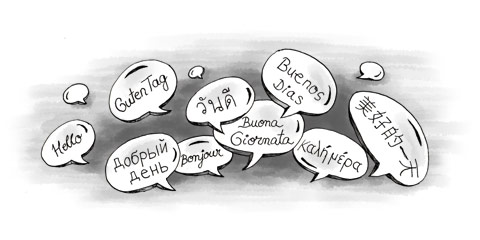The largest linguistic minority in Croatia is Serb (spoken by 1% of the population). Other languages include Italian, Hungarian, Czech, Slovak and German.
As Croatian is a Slav language, it is very similar to Serb and Slovene. It is also spoken in parts of Bosnia and Herzegovina, Montenegro and Serbia. For this reason, the term Serbo-Croatian is considered prejudiced and the long “Bosnian-Croatian-Montenegrin-Serbian” is preferred in diplomatic circles.
The main dialect is based on Shtokavian, or Eastern Herzegovinian, although three more exist (Chakavian, Kajkavian and Torlakian).
English and German are the most common second languages for Croats, although Italian, French, Czech and Hungarian are also spoken by some.
The Croatian language
Croatian is a South Slavic language, written only in the Roman alphabet with a few added consonants: č, ć, š, ž, dž, đ, lj and nj,which represent sounds existing in the Cyrillic alphabet. On the other hand, vowels remain unchanged.
As in all Slavic languages, Croatian uses a subject, verb, object order. However, the use of declinations for all nouns, verbs and adjectives makes this order less strict than in English and changes result in literary or poetical tones.
Nouns are declined into seven cases and divided into three genders, thus making it particularly difficult for an English-speaker to learn the language. Verbs are divided into perfective and imperfective, depending on whether the action is completed. There are seven tenses, although only four are commonly used.
Intonation
The Croatian language has two tones: one rising and one falling, as well as short and long vowels. The general rule is that a falling tone occurs on monosyllabic words, or on the first syllable of a word. A rising tone can occur on any syllable of polysyllabic words except for the last one, and never in monosyllabic words.

